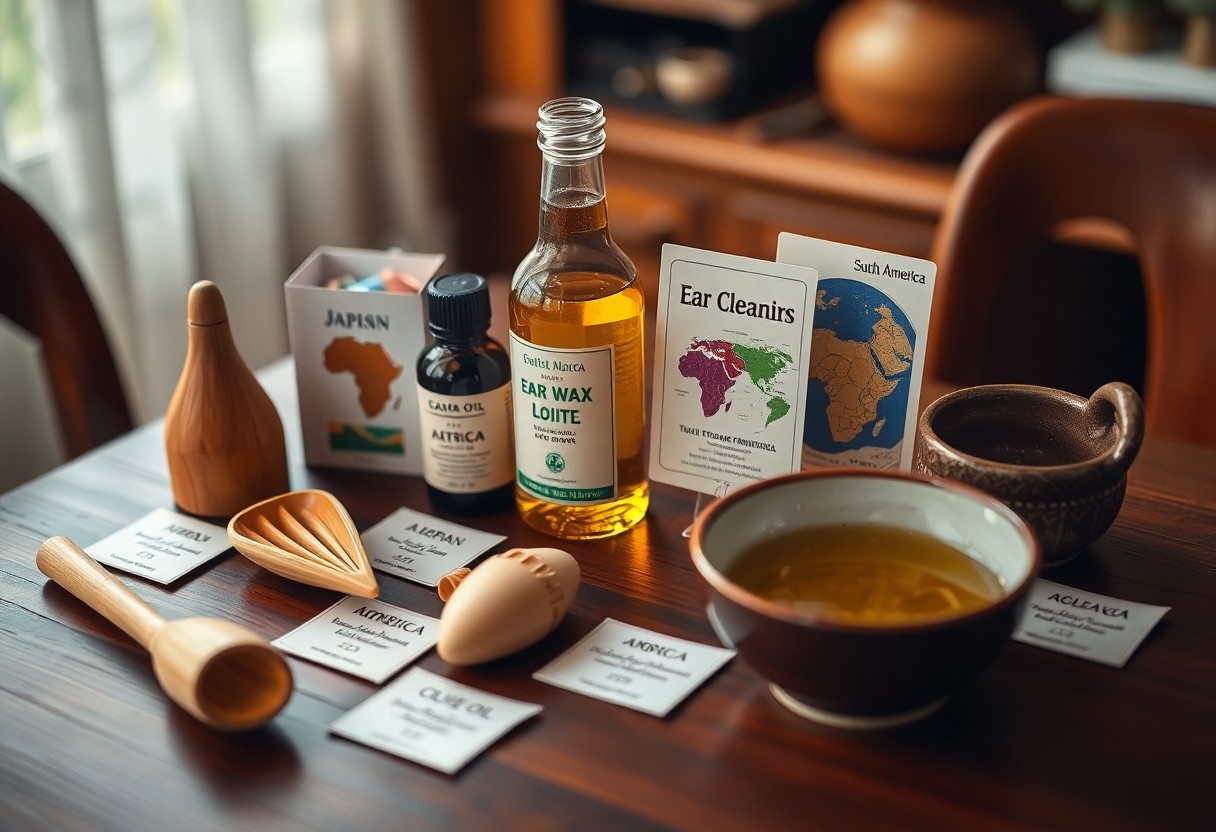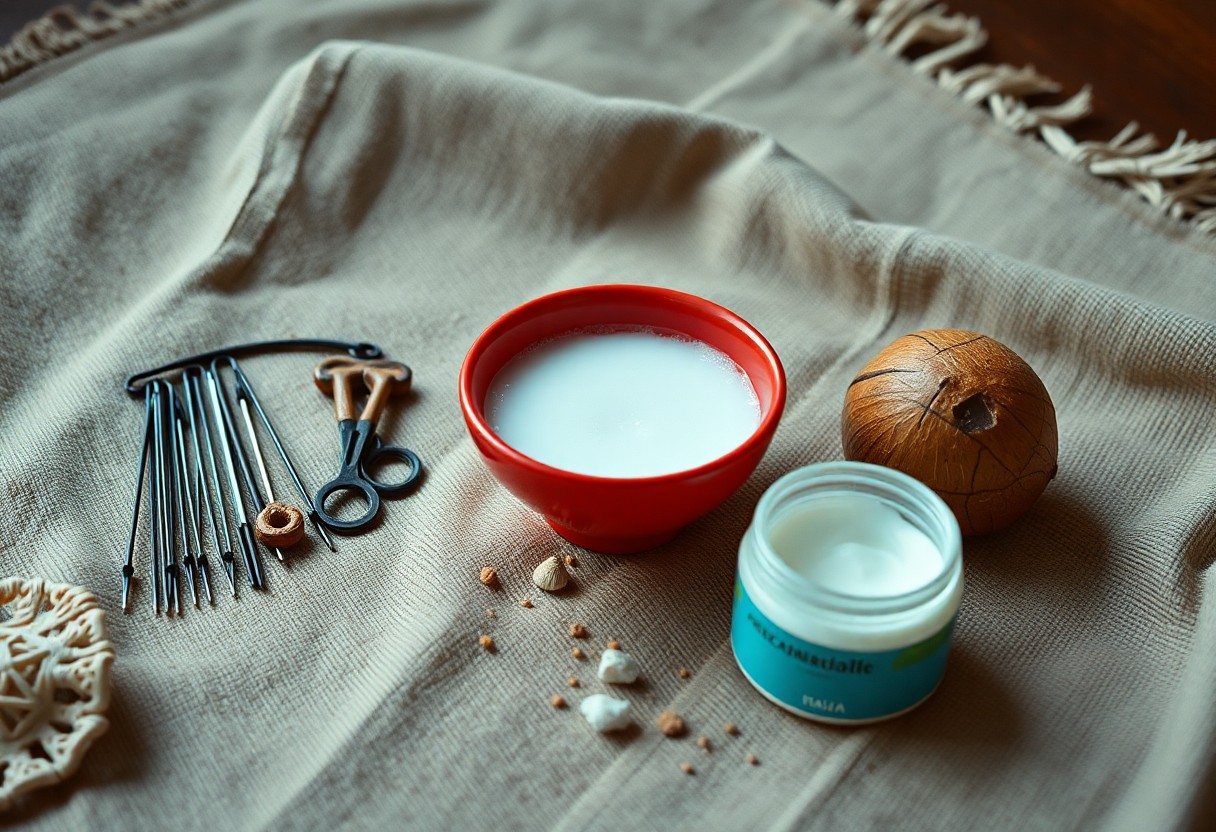Ear cleaning is a practice deeply embedded in various cultures around the world, offering insights into unique methods and beliefs surrounding ear hygiene. You will discover how different societies utilize ear picks, oils, herbs, and various home remedies to maintain ear health. This exploration not only highlights the diversity of techniques but also emphasizes the importance of understanding safe practices to care for your ears effectively. By examining these global traditions, you can better appreciate the rich tapestry of ear cleaning practices that have been passed down through generations.
Key Takeaways:
- Global ear cleaning traditions vary significantly, reflecting cultural practices, beliefs, and available resources.
- Tools such as ear picks, sprays, and natural remedies are commonly used in different cultures, showcasing diverse approaches to ear hygiene.
- Some methods may pose risks to ear health, highlighting the importance of understanding safe practices and professional advice.
The Historical Roots of Ear Cleaning Practices
Ancient Civilizations and Their Techniques
Ancient civilizations utilized various techniques for ear cleaning, reflecting their understanding of hygiene. Egyptians employed ear scoops made from materials like bronze, while Romans used ear picks, often ornate and designed with specific shapes to navigate the ear canal. In China, bamboo ear picks were common, crafted for both practicality and elegance, showcasing a blend of functionality and artistry.
Ear Cleaning as a Cultural Ritual
Ear cleaning often transcends hygiene, evolving into significant cultural rituals. In many societies, such as in parts of Southeast Asia and Africa, the process involves communal participation, where family members assist each other. This act symbolizes trust and care, strengthening familial bonds while maintaining personal cleanliness.
Cultural ear cleaning rituals often carry deep meanings, merging health and social practices. For example, in some Asian communities, ear cleaning is seen as an imperative part of self-care, often performed after traditional cleansing baths. The practice can signify respect for one’s body and is commonly viewed as a means of preparing for important life events, such as weddings or festivals. Community gatherings may even include ear cleaning as a social ritual, promoting connection and shared heritage among participants.
Ear Picks: The Tools of Choice Across Continents
The Evolution of Ear Picks in Asia
In Asia, ear picks have evolved into intricate tools, combining functional design with cultural significance. Traditionally crafted from materials such as bamboo, metal, or jade, each region showcases distinctive styles. For instance, Japanese ear picks, known as “mimikaki,” often have a gentle curve, accommodating the ear’s shape and minimizing discomfort. In China, ear cleaning has deep historical roots, with techniques documented in ancient texts, highlighting the balance of hygiene and wellness.
Perspectives on Safety and Effectiveness
The safety and effectiveness of ear picks vary significantly across cultures. While some practitioners advocate for their use in preventing earwax buildup, others warn against potential injuries. For example, using ear picks incorrectly can lead to perforated eardrums or ear canal irritation, particularly when excessive force is applied. Awareness of technique and tool material is important in maximizing their benefits while minimizing risks.
Research underscores both the benefits and dangers associated with ear picks. In countries where they are commonly used, practitioners emphasize the importance of gentle maneuvering to avoid harming the delicate ear structures. Reports indicate that misuse accounts for a substantial number of ear injuries annually, prompting public health campaigns in some regions. Educating yourself about proper techniques and selecting appropriate ear picks is vital for maintaining ear health while enjoying this traditional practice.

Herbal Remedies and Natural Approaches
Traditional Remedies from Around the World
Many cultures have cultivated unique herbal remedies for ear care. In India, for example, warm mustard oil infused with garlic is often used to soften wax and soothe irritation. Traditional Chinese Medicine frequently employs a blend of herbal concoctions, including ginseng and ginger, to promote overall ear health. Meanwhile, in Latin America, tea tree oil is commonly used for its antiseptic properties, providing relief from infections. These practices highlight the diversity of natural solutions tailored to specific cultural needs and environments.
The Science Behind Essential Oils and Natural Solutions
The efficacy of necessary oils in ear care stems from their anti-inflammatory, antibacterial, and soothing properties. Studies indicate that oils like lavender and tea tree can reduce inflammation and combat bacteria, aiding in ear health and hygiene. Research suggests that the active compounds found in these oils, such as linalool in lavender, possess significant therapeutic properties, enhancing their effectiveness in treating common ear ailments. Additionally, these natural solutions offer a chemical-free alternative to traditional medications, appealing to those seeking holistic health approaches.
Essential oils interact with the body’s systems in multiple ways, promoting healing and relief. For instance, compounds like terpinen-4-ol in tea tree oil exhibit powerful antimicrobial actions, effectively reducing bacterial presence in the ear canal. A study published in the Journal of Clinical Microbiology highlights that tea tree oil reduces microbial growth by 90% within hours of application. Incorporating necessary oils into a regular ear care routine could not only help prevent infections but also enhance overall ear wellness through their unique therapeutic benefits.

Ear Hygiene in Different Cultures: A Comparative Analysis
| Culture | Practices |
|---|---|
| East Asian | Use of bamboo ear picks and traditional herbal remedies. |
| Middle Eastern | Incorporation of olive oil and warm water to soften earwax. |
| Western | Emphasis on cotton swabs and professional cleaning. |
| Indigenous Traditions | Utilization of natural resources and knowledge passed through generations. |
| South Asian | Use of ear candling techniques and oil infusions. |
East vs. West: Diverging Practices and Beliefs
In Eastern cultures, ear hygiene often involves gentle tools like bamboo picks, reflecting a deep-seated belief in holistics and natural remedies. In contrast, Western approaches prioritize convenience, typically favoring cotton swabs and over-the-counter products. This divergence highlights differing philosophies—Eastern methods emphasize prevention and care, while Western approaches often lean towards quick fixes and medical interventions.
The Impact of Religion and Spirituality on Ear Care
Various religious practices influence ear hygiene routines, intertwining spiritual beliefs with physical care. In Islam, for instance, hygiene is regarded as an vital part of faith; rituals often emphasize cleanliness of the body, including the ears. Similarly, Hindus incorporate traditional Ayurvedic practices, where ear health is tied to overall wellness and spiritual balance.
These religious doctrines impact ear care significantly. Islamic teachings promote the cleanliness of the body, leading to the use of specific cleansing rituals, such as the istinja, that include ear care. In contrast, Ayurveda offers a holistic view, suggesting regular oil treatments for ear health, which are believed to support mental clarity and spiritual well-being. This blend of spirituality and practical care underscores the importance of ear hygiene across cultures and its role in overall health and religious observance.
The Role of Modern Medicine in Ear Hygiene
Integrating Traditional Practices with Contemporary Techniques
Blending traditional ear hygiene methods with modern medical insights offers a comprehensive approach to ear care. You can draw from cultural practices, such as using bamboo ear picks, alongside contemporary solutions like softening agents and professional cleaning. Various cultures emphasize gentle techniques that avoid ear damage, and these can be enhanced through the latest research on ear health, fostering a balance between time-honored wisdom and scientific advancements.
Health Risks Associated with DIY Ear Cleaning
Engaging in DIY ear cleaning poses significant health risks, including injury and infection. Many people attempt to use cotton swabs or other objects, not realizing these tools can push wax deeper or damage the ear canal, leading to painful conditions. Misguided methods may also lead to perforated eardrums or cerumen impaction, necessitating professional intervention.
Statistics show that nearly 12 million Americans seek medical attention for ear-related issues each year, often due to unsafe cleaning practices. The use of cotton swabs, despite their popularity, is a leading cause of ear injuries; studies reveal that they can create blockages, worsening the problem rather than alleviating it. Furthermore, improper cleaning can introduce bacteria, increasing the risk of infections such as otitis externa. Opting for professional evaluation and advice from healthcare providers ensures safer ear hygiene practices and helps you avoid these potential pitfalls.
The Psychological and Social Dimensions of Ear Cleaning
Ear Cleaning as a Social Bonding Activity
Engaging in ear cleaning can serve as a unique bonding experience among family members or friends. In many cultures, sharing this personal ritual creates intimacy, allowing individuals to connect over shared practices and preferences. Whether it’s using traditional tools or discussing home remedies, these moments foster a sense of trust and closeness, often passed down through generations.
The Influence of Media and Trends on Ear Care Practices
Media plays a pivotal role in shaping your ear care routines, as trends from social media platforms or celebrity endorsements can popularize specific products and methods. You might find influencers demonstrating unconventional techniques or showcasing trendy ear cleaning tools, which can transform personal habits. This wave of information propels certain practices to the forefront, guiding public perception and influencing choices.
For instance, the rise of “ear cleaning videos” on platforms like TikTok and YouTube has captivated millions, illustrating both traditional methods and innovative gadgets. These viral trends can often lead to a surge in consumer demand for certain tools, like specialized ear scoops, promoting their use while simultaneously sparking debates about safety and efficacy. Consequently, the way you approach ear hygiene may evolve, influenced by a blend of modern aesthetics, peer validation, and evolving standards of beauty and health. This impact reflects a broader cultural shift towards personal grooming influenced by digital media narratives.
Expert Opinions on Best Practices in Ear Hygiene
What ENT Specialists Recommend
ENT specialists advise against using cotton swabs and other objects for ear cleaning, as these can push wax deeper and risk injury. Instead, they recommend periodic professional cleaning, especially for individuals prone to excessive wax buildup. A gentle rinse with warm water during showers can help maintain cleanliness without jeopardizing ear health. For those experiencing discomfort, using over-the-counter ear drops containing carbamide peroxide can effectively soften wax. Always consult a specialist if you have concerns about your ear health.
The Future of Ear Care: Integration of Tradition and Innovation
The evolution of ear care will likely see a harmonious blend of traditional practices and modern technology, empowering you with a diverse toolkit for maintaining ear hygiene. Innovative devices, such as smart ear cleaners equipped with cameras, offer advanced solutions while respecting time-honored methods. Emerging research on the efficacy of herbal remedies combined with digital health tools may also enhance individualized care plans. These advancements promise to preserve cultural significance while improving safety and efficacy in ear hygiene.
Summing up
Upon reflecting, you can appreciate the rich tapestry of global ear cleaning traditions, from the precise use of ear picks in certain cultures to various home remedies that have been passed down through generations. Understanding these practices allows you to consider the health and hygiene of your ears in a broader context. While adopting these methods, it’s vital to prioritize safety and hygiene, ensuring that your choices align with modern health guidelines. By doing so, you can benefit from traditional wisdom while safeguarding your ear health.
FAQ
Q: What are the common methods used in global ear cleaning traditions?
A: Common methods include the use of ear picks in countries like Japan and China, the application of oils and natural remedies in various cultures, and specialized ear scoops in certain African traditions. Each method reflects unique cultural practices and beliefs surrounding ear hygiene.
Q: Are there any risks associated with ear cleaning practices?
A: Yes, excessive or improper ear cleaning can lead to ear injuries, infections, or impacted wax. Certain practices, such as using cotton swabs, can push wax deeper into the ear canal, potentially causing damage.
Q: What natural remedies are popular for ear cleaning?
A: Popular natural remedies include olive oil, warm mineral oil, and hydrogen peroxide. These substances are often used to soften earwax and facilitate easier removal without the use of invasive tools.
Q: How do ear cleaning traditions vary by culture?
A: Ear cleaning traditions vary widely; for instance, in some Indigenous cultures, herbal infusions are preferred, while in Western societies, professional cleaning by a healthcare provider is more common. Each practice is influenced by historical beliefs and available resources.
Q: What is the importance of ear cleaning in different cultures?
A: Ear cleaning can be viewed as a health practice, a ritualistic procedure, or a hygiene necessity, depending on the culture. It often signifies self-care and can be tied to social or familial bonding experiences.



